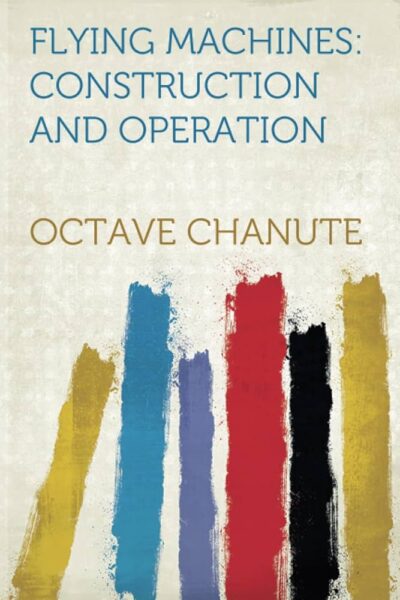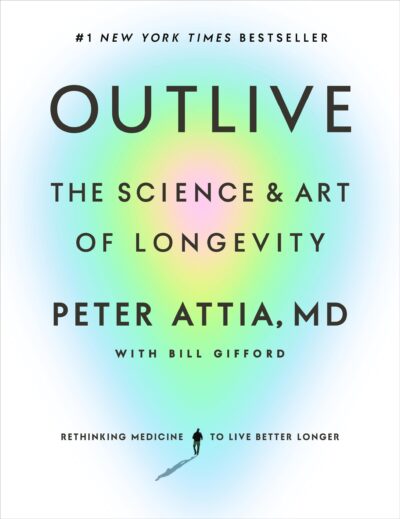46 Results with the "Science" genre
Adventure Fiction (1164)
Biography (435)
Business & Finance (1)
Children's Literature (124)
Comics (6)
Culture (51)
Drama (123)
Dystopian (29)
Fable (86)
Fantasy (1132)
Fantasy (203)
Fiction (1010)
Finance (1)
Gothic Fiction (12)
Historical Fiction (615)
History (122)
Horror (56)
Lifestyle (36)
Literary (404)
Literary Fiction (207)
Memoir (113)
Mystery (422)
Non-fiction (87)
Novel (549)
Paranormal Fiction (96)
Philosophical (182)
Philosophy (45)
Poetry (249)
Political Fiction (14)
Politics (42)
Practical (32)
Psychological (4)
Psychological Thriller (108)
Relationship (6)
Romance Novel (716)
Romantic Melodrama (14)
Satire (91)
Science Fiction (345)
Self-help (68)
Society (65)
Society (2)
Spiritual Growth (1)
story (2)
Thriller (704)
True Crime (56)
view (11)
Women's Fiction (2)
Young Adult (233)
-
 Chapter XII - Flying Machines Construction And Operation offers clear, practical guidance for those beginning their journey into the world of aviation. Rather than focusing on dramatic altitude records or sensational feats, this chapter encourages new pilots to prioritize control, safety, and confidence in their first experiences. By drawing on the wisdom of early aviators, the authors present a flight philosophy built around gradual mastery rather than risky experimentation. Most experienced pilots,…
Chapter XII - Flying Machines Construction And Operation offers clear, practical guidance for those beginning their journey into the world of aviation. Rather than focusing on dramatic altitude records or sensational feats, this chapter encourages new pilots to prioritize control, safety, and confidence in their first experiences. By drawing on the wisdom of early aviators, the authors present a flight philosophy built around gradual mastery rather than risky experimentation. Most experienced pilots,…-
142.7 K • Ongoing
-
-
 Chapter XXIII - Flying Machines Construction And Operation presents a nuanced view of how innovation, legality, and accessibility intersect in early aviation history. The Wright brothers, known for their groundbreaking contributions to powered flight, make a significant gesture by allowing amateurs and non-commercial users to adopt their patented technology without restriction. This policy encourages experimentation and scientific exploration, as long as the use remains outside of profit-driven exhibitions…
Chapter XXIII - Flying Machines Construction And Operation presents a nuanced view of how innovation, legality, and accessibility intersect in early aviation history. The Wright brothers, known for their groundbreaking contributions to powered flight, make a significant gesture by allowing amateurs and non-commercial users to adopt their patented technology without restriction. This policy encourages experimentation and scientific exploration, as long as the use remains outside of profit-driven exhibitions…-
142.7 K • Ongoing
-
-
 Chapter II - Flying Machines Construction And Operation explores the early stages of aviation by contrasting two major categories of flight—lighter-than-air balloons and heavier-than-air flying machines. Unlike balloons that drift by gas-based lift, true flying machines rely on forward propulsion and airfoil lift, drawing their core principle from birds. The fascination with avian motion inspired early pioneers to imitate nature's balance between wing surface and body weight through mechanical means. Key…
Chapter II - Flying Machines Construction And Operation explores the early stages of aviation by contrasting two major categories of flight—lighter-than-air balloons and heavier-than-air flying machines. Unlike balloons that drift by gas-based lift, true flying machines rely on forward propulsion and airfoil lift, drawing their core principle from birds. The fascination with avian motion inspired early pioneers to imitate nature's balance between wing surface and body weight through mechanical means. Key…-
142.7 K • Ongoing
-
-
 Chapter 5 of Eat Less, Live Longer? The Science of Hunger and Health explores the discovery of rapamycin and its potential impact on human health and longevity. The chapter begins with the author's journey to Easter Island with three companions, drawn by their interest in the origins of this unique compound. Initially extracted from the island’s soil in 1964 by a Canadian research team, rapamycin was further studied by scientist Suren Sehgal, who identified its antifungal properties. What started as a…
Chapter 5 of Eat Less, Live Longer? The Science of Hunger and Health explores the discovery of rapamycin and its potential impact on human health and longevity. The chapter begins with the author's journey to Easter Island with three companions, drawn by their interest in the origins of this unique compound. Initially extracted from the island’s soil in 1964 by a Canadian research team, rapamycin was further studied by scientist Suren Sehgal, who identified its antifungal properties. What started as a…-
87.7 K • Ongoing
-
-
 Chapter XIII - Flying Machines Construction And Operation takes a technical yet practical look into the core challenge that defines flight—power. Unlike vehicles on roads that rely on solid ground for support, airships and aeroplanes must expend energy not only to move but also to stay aloft. This need for constant lift transforms the dynamics of power usage, making flight a far more demanding exercise in engineering than land travel. While a car weighing 4,000 pounds can be driven at 50 miles per hour…
Chapter XIII - Flying Machines Construction And Operation takes a technical yet practical look into the core challenge that defines flight—power. Unlike vehicles on roads that rely on solid ground for support, airships and aeroplanes must expend energy not only to move but also to stay aloft. This need for constant lift transforms the dynamics of power usage, making flight a far more demanding exercise in engineering than land travel. While a car weighing 4,000 pounds can be driven at 50 miles per hour…-
142.7 K • Ongoing
-
-
 Chapter XXIV - Flying Machines Construction And Operation turns its focus toward one of the most essential components in early aviation: the propeller. This chapter breaks down the complexity behind what might seem like a simple rotating blade, revealing how subtle variations in shape, pitch, and alignment can drastically impact a flying machine’s performance. Every designer works with the same basic goal—to generate maximum thrust with minimal energy—yet each brings personal techniques to the…
Chapter XXIV - Flying Machines Construction And Operation turns its focus toward one of the most essential components in early aviation: the propeller. This chapter breaks down the complexity behind what might seem like a simple rotating blade, revealing how subtle variations in shape, pitch, and alignment can drastically impact a flying machine’s performance. Every designer works with the same basic goal—to generate maximum thrust with minimal energy—yet each brings personal techniques to the…-
142.7 K • Ongoing
-
-
 Chapter III - Flying Machines Construction And Operation explores the basic aerodynamic principles that allow both birds and aircraft to achieve and sustain flight. Through simple, observable experiments, it reveals how motion and air interaction contribute to lift. These foundational insights form the basis of understanding why flying machines behave as they do once airborne. A common demonstration uses a flat circular piece of cardboard. When dropped, gravity pulls it down immediately. But when it’s…
Chapter III - Flying Machines Construction And Operation explores the basic aerodynamic principles that allow both birds and aircraft to achieve and sustain flight. Through simple, observable experiments, it reveals how motion and air interaction contribute to lift. These foundational insights form the basis of understanding why flying machines behave as they do once airborne. A common demonstration uses a flat circular piece of cardboard. When dropped, gravity pulls it down immediately. But when it’s…-
142.7 K • Ongoing
-
-
 Chapter 6 of The Crisis of Abundance explores the widening gap between human evolution and modern dietary habits, focusing on the rapid rise of nonalcoholic fatty liver disease (NAFLD) and its more severe form, nonalcoholic steatohepatitis (NASH). These conditions have increased alongside obesity and metabolic disorders, often progressing unnoticed due to their subtle or nonexistent early symptoms. Originally identified in individuals with excessive fructose intake rather than alcohol consumption, the…
Chapter 6 of The Crisis of Abundance explores the widening gap between human evolution and modern dietary habits, focusing on the rapid rise of nonalcoholic fatty liver disease (NAFLD) and its more severe form, nonalcoholic steatohepatitis (NASH). These conditions have increased alongside obesity and metabolic disorders, often progressing unnoticed due to their subtle or nonexistent early symptoms. Originally identified in individuals with excessive fructose intake rather than alcohol consumption, the…-
87.7 K • Ongoing
-
-
 Chapter XIV - Flying Machines Construction And Operation presents a compelling look into the invisible but powerful forces that shape the journey of every aircraft—wind currents. Rather than offering a theoretical treatment, the chapter captures lived experience, blending technical understanding with the raw unpredictability that every early aviator faced. Arthur T. Atherholt's insights emerge as a focal point, combining personal reflection with lessons learned through high-stakes balloon races and solo…
Chapter XIV - Flying Machines Construction And Operation presents a compelling look into the invisible but powerful forces that shape the journey of every aircraft—wind currents. Rather than offering a theoretical treatment, the chapter captures lived experience, blending technical understanding with the raw unpredictability that every early aviator faced. Arthur T. Atherholt's insights emerge as a focal point, combining personal reflection with lessons learned through high-stakes balloon races and solo…-
142.7 K • Ongoing
-
-
 The Hitchhiker's Guide to the Internet by Stephen McLaughlin is a playful, informative book that serves as a guide to the early days of the internet, offering readers practical advice and humorous insights on how to navigate the online world, connect with others, and make the most of emerging digital technologies.
The Hitchhiker's Guide to the Internet by Stephen McLaughlin is a playful, informative book that serves as a guide to the early days of the internet, offering readers practical advice and humorous insights on how to navigate the online world, connect with others, and make the most of emerging digital technologies.-
4.9 K • Nov 8, '24
-
4.6 K • Nov 8, '24
-
4.3 K • Nov 8, '24
-
- 1 2 … 5 Next
